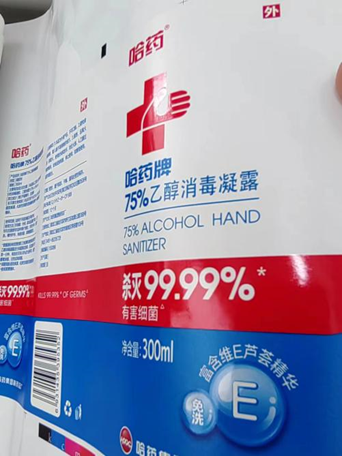- Enterprise dynamic
- Industry news
Industry news
Have you used the polishing process correctly? These precautions must be known!
Have you used the polishing process correctly? These precautions must be known!
A label is a printed material used to identify product related instructions. By sticking it on the outer side of the product packaging, it can not only prominently inform consumers of the product name, but also effectively differentiate the product from other similar products and highlight the brand. In order to further attract consumers' attention, in addition to the innovative packaging design of the product, a polishing process can also be added to the rich color printing of the label, making the original label more shiny and giving consumers a refreshing feeling.
Glazing process refers to the application of a colorless and transparent gloss on the surface of a label, with the aim of increasing the glossiness of the printed material surface, achieving the functions of preventing stains, moisture, and protecting the image and text. In general, the polishing process can be divided into overall polishing, local polishing, reverse polishing, and so on. In this article, the author mainly elaborates on the three polishing processes mentioned above, in order to understand their characteristics and usage precautions together.
01. Overall Glazing Characteristics
Overall polishing, also known as full plate polishing, refers to applying a layer of colorless and transparent varnish to the entire label surface. After leveling, drying, calendering, and curing, a thin and uniform transparent layer is formed on the label surface, which enhances the smoothness of the label surface and adds decoration and processing to printed images and texts. It should be noted that there is a certain difference between overall glazing and lamination. lamination refers to the process of covering a layer of 0.012~0.02mm thick transparent plastic film on the surface of the label after printing, using a laminating machine to heat or pressure it, so that the label and the plastic film are covered together. As shown in Figure 1, the pre coated film material needs to be heated for lamination, while Figure 2 shows the film material needs to be pressed for lamination. Because the lamination process requires the use of plastic film as the raw material, from an environmental perspective, the polishing process is more environmentally friendly than the lamination process, especially water-based polishing and UV polishing. Water-based polishing has the characteristics of non-toxic, non irritating, no organic volatiles, low cost, and wide material sources. It has high transparency and good glossiness. Under long-term strong sunlight exposure, water-based polishing oil is not easy to turn yellow, has strong wear resistance, and is scratch resistant. UV varnish contains almost no solvents and requires relatively low energy consumption for curing; Strong affinity for ink and firm adhesion; The surface of the printed product has better wear resistance, drug resistance, and chemical resistance, with good stability, and can be wiped with water and ethanol; UV polishing products are not easy to stick and can be stacked after solidification, saving time for the next processing operation and improving production efficiency.
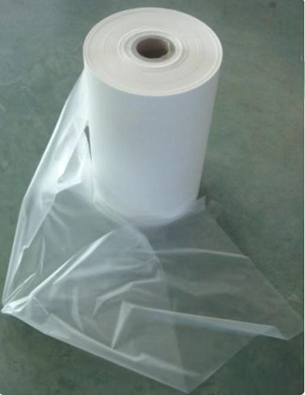
Figure 1: Pre coating material that needs to be heated for lamination
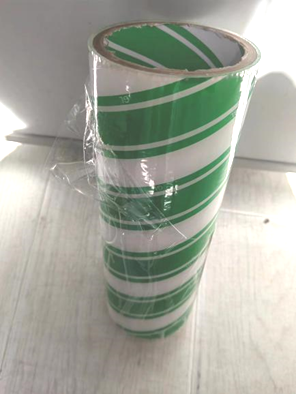
Figure 2: Thin Film Materials that Require Pressure Cladding
02 Overall Glazing Precautions
When using the overall polishing process to increase the glossiness of the label, in order to achieve the quality of polishing and ensure normal production operation, it is necessary to pay attention to the following four aspects: first, control the thickness of the gloss oil; The second is to make a good choice of gloss, as there are many types of gloss, so when choosing gloss, it is necessary to choose different gloss based on both the printing material and the polishing method; The third is to control the viscosity and surface tension of the varnish. The viscosity of the varnish will have an impact on its leveling, drying speed, surface glossiness, etc. Therefore, it is necessary to adjust the appropriate viscosity of the varnish according to different printing materials. At the same time, it is also necessary to pay attention to the tension changes on the surface of the varnish, so that the surface tension of the varnish is less than the surface tension of the ink layer on the surface of the substrate, so that the varnish can be well wetted, adhered to, and soaked into the surface of the label; Fourthly, attention should be paid to the coordination between glazing speed, coating amount, pressure, and curing equipment power. The relationship between wetting and absorption should be adjusted reasonably based on different substrate surfaces.
01.Local Glazing Characteristics
Partial glazing refers to applying gloss only to a prominent position in the label, making it brighter, more vivid, and more three-dimensional compared to the surrounding images and text, thereby creating a unique artistic effect. At present, common local polishing effects include local gloss, local matte, local snowflakes, local frosting, local foaming, local refraction, local wrinkles, etc. Local glazing can be applied either after lamination or directly on the printed product. However, in order to highlight the effect of local glazing, it is usually applied after lamination on the printed product, with the majority being matte film (about 65% of local glazing products). As shown in Figure 3, the label is partially illuminated. From this, it can be seen that the surface of the label after local polishing treatment has a more textured and three-dimensional feel, making the local part of the label present higher brightness, transparency, and wear resistance, giving people a strong visual impact.
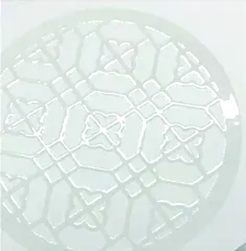
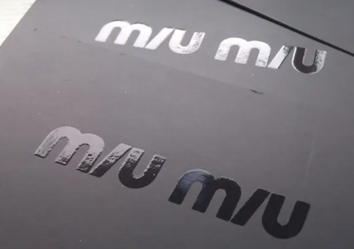
Figure 3 Display of Local Glazing Effect on Labels
02 Local Glazing Precautions
Local glazing can be achieved through methods such as screen printing and flexographic printing. Because the ink layer of screen printing is thicker than offset printing, gravure printing, and embossing, using screen printing for local polishing will have a more obvious effect. However, when using screen printing for local polishing, it is necessary to pay attention to the following aspects: firstly, the formula of UV varnish is different in winter and summer, and when using it, attention should be paid to distinguishing between seasonal and weather temperature changes, and selecting the appropriate varnish, Usually, the curing content of winter UV varnish formula is lower than that of summer formula. If the winter UV varnish formula is used in summer, it will lead to incomplete curing of UV varnish, which is easy to cause problems such as anti adhesion. On the contrary, if the summer UV varnish formula is used in winter, it will lead to poor leveling of UV varnish, causing problems such as foaming and scaling; Secondly, UV varnish should be thoroughly stirred and evenly mixed before use, as UV varnish is made up of many chemical raw materials. If left unused for a long time, some of the chemical raw materials in the barrel will be separated. Therefore, it is necessary to thoroughly stir and evenly mix before use.
01 Reverse Glazing Features
Reverse glazing is a combination of local glazing and local frosting to achieve high contrast effects in local graphics and text. The reverse polishing process can be completed in one operation on a printing machine or offline.
Reverse glazing can present a contrasting effect of specular highlights and matte pits on the label surface, creating a stronger contrast in brightness and achieving better results in glazing. It can not only play a anti-counterfeiting role but also achieve a beautiful effect. Reverse glazing: First, use offset printing to print a transparent matte base oil on the non high gloss areas of the design draft. Then, apply the top oil to the label printed material in a full plate manner and cure it to dryness. The top oil reacts with the previously printed base oil to form a matte matte effect on the non high gloss areas, while the areas without the bottom oil form a high gloss effect. Due to the use of offset printing in non high light positions, overprinting will be very accurate, ensuring the printing accuracy of images and texts in high light positions. As shown in Figure 4 and Figure 5, the label product adopts reverse glazing technology. Among them, Figure 4 (b) shows the local magnification effect of the label, and the bright and matte parts are marked in the figure. The red printed part in the label in Figure 5 shows a glossy effect, while the white and blue parts show a matte matte effect.
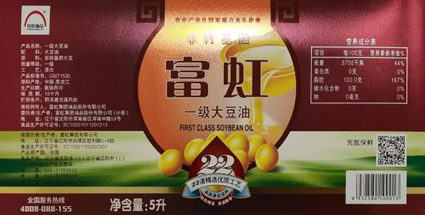
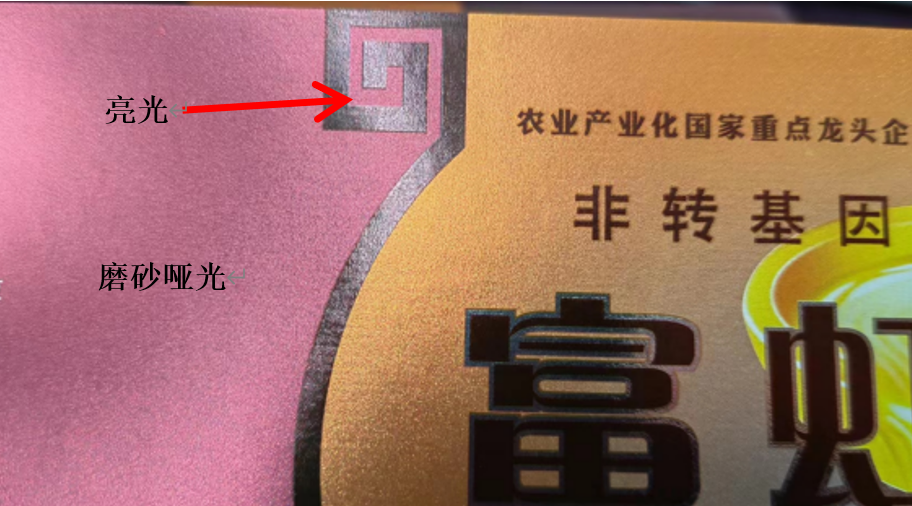
02 Precautions for reverse glazing
When using the reverse polishing process, it is necessary to pay attention to: firstly, it is necessary to ensure that the ink used for conventional image and text printing of label products has completely dried or solidified. If the ink layer is not dry, it will cause incomplete curing of the light oil and no comparative effect; Secondly, when designing files, do not choose small characters or patterns for reverse glazing effects. If the font or pattern is too small, it can cause paste problems; The third factor is that the thickness of the frosted texture is related to factors such as the speed of the printing machine, printing pressure, varnish thickness, varnish type, and the smoothness of the substrate surface. If the printing machine is fast, the oil layer is thin, the frosted texture is rough, and the surface smoothness of the printing material is good, the effect of the frosted texture will be very obvious. Overall, reverse glazing can achieve contrast effects that ordinary glazing cannot achieve, making the printing effect of printed materials more exquisite, playing a finishing touch, and improving the quality of label printing.
Faced with increasingly strict national requirements for environmental protection and pollution prevention, as well as consumers' love for the bright and novel appearance of printed products, in the fiercely competitive market environment, more and more label printing companies are using various post-press finishing techniques, especially the polishing process. Through small changes in the post-press process, it promotes the diversification of product design to adapt to the new environment and meet new needs, Add stronger visual impact to labeled products.
